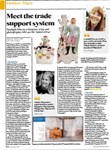The fifth directive to the Anti-Money Laundering Directive, due to come into force in 2019, is designed to make the transfer of assets more transparent and to ensure vendors and banks know their customers and report suspicious activity.
The changes include the need to verify identities for transactions of €10,000 or more, irrespective of the method of payment, whether by cash, credit card, bank transfer or cheque. It also covers a series of lower-value ‘linked transactions’ that can add up to €10,000 or more. Previously in the UK, such checks were necessary only for cash transactions of €10,000 or more.
Already compliant
The update will not expressly require all EU member states to monitor the art trade in this way but some countries, including Italy, France, Spain and Germany, already require auction houses and dealers to meet new requirements.
CINOA, the international confederation of art and antique dealer associations, said the new EU measures threaten to damage the art trade. The update “could cause considerable problems” for many dealers and auction houses if passed unamended.
“Changes include the need to verify any sale of €10,000 or more
Rudy Capildeo, partner at law firm Boodle Hatfield, told ATG: “I can sympathise with the trade being reluctant to accept these increased legal requirements. However, this latest amendment is not focused purely on the art market but is being implemented to tackle the scourge of terrorist financing.
“One income stream for these criminal organisations is the illicit trade of cultural property. Naturally, dealers and auction houses must be more vigilant and accept responsibility for ensuring a safe and robust market place.”
Recent publicity following a money-laundering investigation in New York (ATG No 2333) has highlighted a perception – challenged by dealer associations – that the art market operates unregulated.
Separately, the EU has launched a new crackdown on the illegal import of cultural goods, requiring descriptions and images of all ‘cultural goods more than 250 years old’ to be entered onto a register before being imported into the EU. CINOA is lobbying for changes to this regulation ahead of its implementation.














